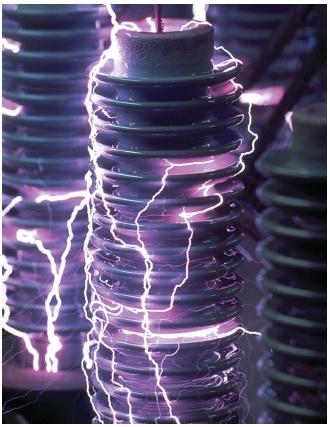 Electricity is known as the crusade or flow of electrically powered instruments. In the most common form used daily, it is generated by other energy sources (primary) therefore it is considered a secondary energy source. Today electricity signifies one of the most widely used forms of energy. Understanding its history helps us to recognize the importance of electricity conservation.
Electricity is known as the crusade or flow of electrically powered instruments. In the most common form used daily, it is generated by other energy sources (primary) therefore it is considered a secondary energy source. Today electricity signifies one of the most widely used forms of energy. Understanding its history helps us to recognize the importance of electricity conservation. When was electricity created?
The invention of electricity as we know it today dates back to a series of improvements or discoveries mainly back into the 1800’s. There were several key interpretations starting with static electricity as of 600 BC. From there multiple innovations took place which ultimately led to the creation and distribution of electricity that we have all become adapted to.
History of Electricity – Timeline Leading to Multiple Discoveries and Key Innovations
- Around 600 BC a Greek named Thales discovered static electricity, notion that objects can become electrically charged.
- In 1660 a machine was invented by Otto von Guericke that demonstrated static electricity.
- During 1745-46, Georg Von Kleist developed the first electric capacitor, which stored electricity.
- In 1752, Ben Franklin proved that static electricity and lightning were one of the same. This experiment is known as key tied to a kite string during a thunderstorm.
- In 1800, Alessandro Volta invented the first electric battery. His name was used in creation of the notion of voltage (volt).
- In 1821, the principle of electro-magnetic rotation was discovered by which later is essential for developing the electric motor.
- In 1826, the relationship between power, voltage, current and resistance was defined by Georg Ohm which is now known as Ohms Law.
- In 1831, Michael Faraday led experiments which proved that electricity can be induced by changes in an electromagnetic field. These experiments about how (electricity) current led to understanding of electrical transformers and motors.
- In 1837, the electric motor was invented by Thomas Davenport which is now common in many electrical appliances.
- In 1878-79, the Edison Electric Light Co. was founded by Thomas Edison, which after purchasing several patents, began experiments which led to the creation of a long lasting incandescent light bulb which originally lasted for about 40 hours. As of 1880, they were lasting for about 1200 hours.
- In 1879, the California Electric Light Company was founded which is known as the first company providing and selling electricity to households in San Francisco.
- In 1882, the Pearl Street Power Station in New York City was opened by Thomas Edison, which could power about 5,000 lights using direct current (DC). During the same period, the first hydroelectric station was opened in Wisconsin.
- In 1884, an electric alternator for producing alternating current (AC) was invented by Nikola Tesla. During the same period a steam turbine generator was invented by Sir Charles Algernon Parsons.
- In 1893, an alternating current (AC) system to light the Chicago World's Fair was put into place by The Westinghouse Electric Company.
- During 1895-1896, The Niagara Falls hydro-power station opened in the US.
- In 1935, the Roosevelt Administration passed the “New Deal" legislation designed to regulate public utilities and bring electricity to rural America.


This blog made me your crazy follower. I am deeply impressed by your work and therefore adding you in my favorite list so that next time I could read you again.
ReplyDeleteelectric company Dayton ohio